HOUSTON
Inside This Issue

pg. 9
Oncology Research pg.3
Mental Health pg.5
Healthy Heart pg.6
Financial Forecast pg.12



pg. 9
Oncology Research pg.3
Mental Health pg.5
Healthy Heart pg.6
Financial Forecast pg.12



By Hiba Al-Ramahi, J.D. Rebecca Frigy Romine, J.D. Polsinelli, PC
TheU.S. Department of Health and Human Services (HHS), Office for Civil Rights (OCR), recently published a “Notice of Proposed Rulemaking,” HIPAA Security Rule to Strengthen the Cybersecurity of Electronic Protected Health Information (the “Proposed Rule”). The Proposed Rule aims to strengthen cybersecurity protections for electronic protected health information (ePHI) by revising the HIPAA Security Standards for the Protection of Electronic Protected Health Information (the “Security Rule”) to address the following:
1. Changes in the health care sector;
2. Significant increases in breaches and cyber-attacks;
3. Common deficiencies OCR observed in investigations into Security Rule compliance by HIPAA covered entities and their business associates (collectively, “Regulated Entities”);
4. Cybersecurity guidelines, best practices, methodologies, procedures and processes; and
5. Court decisions that affect enforcement of the Security Rule. Public comments on the Proposed Rule are due on March 7, 2025.
Highlights of Proposed Changes
With respect to all ePHI, the Proposed Rule removes the distinction between “required” and “addressable” implementation specifications for

all types of enumerated safeguards under the Security Rule and makes all implementation specifications required with specific, very limited exceptions. It also includes sweeping changes with increased specificity to the standards and implementation specifications of the Administrative and Technical Safeguard requirements; proposed changes to the Physical Safeguard requirements are not as material.
Administrative Safeguards
Under the proposed changes, in place of the existing standard for security management process, Regulated Entities would be required to develop a technology asset inventory and a network map that illustrates the movement of ePHI into, through and out of the Regulated Entity’s electronic information system(s). OCR has proposed the network map must include the technology assets used by the Regulated Entity’s business associates, including offshore business associates, regardless of the physical location of such assets, even though such assets are not part of the Regulated Entity’s own electronic information system.
With respect to the HIPAA risk analysis standard, OCR proposes eight specific implementation specifications
that Regulated Entities would be required to perform and document. Generally, these explicit specifications are consistent with past joint OCR and NIST guidance, but explicitly include asset inventory and network mapping of ePHI requirements, as well as assessing the risk posed by entering or continuing specific business associate arrangements. Other proposed Administrative Safeguard requirement changes include that a Regulated Entity must:
1. Implement detailed written procedures related to patch management and configuration updates, including addressing timely evaluation and installation of patches using a risk-based approach.
2. Establish written procedures to restore the loss of certain critical electronic information systems and data within 72 hours.
3. Conduct a compliance audit at least once every 12 months to ensure compliance with the Security Rule.
4. Require business associates and

By MD Anderson
For smokers undergoing lung cancer screening, medication coupled with intensive counselling was the optimal smoking cessation intervention, study finds
Smokers undergoing lung cancer screening may have the best chance of quitting if they receive integrated care, which includes medication and comprehensive counseling with tobacco treatment specialists, according to researchers at The University of Texas MD Anderson Cancer Center.
The study results, published today in JAMA Internal Medicine, demonstrated that integrated care outperformed other cessation methods with a nearly two-fold improvement in the odds of quitting. In this randomized clinical trial of 630 current smokers who were eligible for lung cancer screening, over 30% of those who received integrated care were still abstaining
from smoking after six months.
“For those who smoke, lung cancer screening presents a critical opportunity for us to support them in quitting,” said principal investigator Paul Cinciripini, Ph.D., chair of Behavioral Science and executive director of the Tobacco Research and Treatment Program at MD Anderson. “Our study demonstrates that providing access to effective medications and trained tobacco cessation specialists offers the greatest chance at successfully quitting and, hopefully, avoiding the potential of lung cancer.”
Lung cancer is the leading cause of cancer mortality in the U.S. and the second most diagnosed cancer, accounting for one in five cancer-related deaths. Tobacco use is responsible for 85% of lung cancer cases and contributes to nearly 30% of all cancer-related deaths. Each year, an estimated 480,000 Americans die from tobacco-related illnesses.

The average smoker makes several attempts to quit before successfully beating the addiction. MD Anderson’s Tobacco Research and Treatment Program tackles the barriers to cessation at an individual and population level, and its scientists conduct research designed to change clinical practice by addressing knowledge gaps among health care providers treating tobacco addiction.
In this study, participants were recruited from Houston between July 2017-2021. They were at least 50 years old and smoked a median of 20 cigarettes per day. The participants were randomized
into three groups of 210, receiving the following interventions: a quitline referral and nicotine replacement therapy (NRT) (QL); a quitline referral plus NRT or medication prescribed by a lung cancer screening clinician (QL+); or integrated care (IC), which included NRT or prescription pharmacotherapy and counseling, provided by a team of tobacco treatment specialists and physicians.
At the three-month mark, IC had the highest quit rate, 37.1%, compared



By Angie Arranz Abreu
Rice University and Houston
Methodist have awarded several seed grants to support research in digital health. Facilitated by Rice’s Educational and Research Initiatives for Collaborative Health (ENRICH) and the Houston Methodist Academic Institute, the seed grants aim to foster new collaborations between both institutions, support teams in securing additional multisource funding and accelerate the translation of technologies into clinical applications.
This funding opportunity followed the second PATHS - UP Digital Health Workshop hosted at Rice University Biosciences Research Collaborative last summer.
The workshop was designed to
pave the way for a digital transformation in the health care system through network building and seed funding. By bringing together experts from diverse backgrounds — including clinicians, engineers, industry professionals, entrepreneurs and government agencies — the organizers sought to catalyze new collaborative research projects in digital health to address pressing health care needs.
“Digital technologies have the potential to transform medical care from episodic to continuous paradigms. Additionally, they offer unique scalability, enabling the delivery of services to previously unreachable populations and providing a foundation for more equitable treatment,” said Ashutosh Sabharwal, Rice’s Ernest Dell Butcher Professor of

Engineering who leads the Rice Digital Health Initiative.
Sabharwal also co-leads the Digital Health Institute, a groundbreaking initiative between Rice and Houston Methodist launched recently. These efforts are part of a history of collaboration between Houston Methodist and Rice, including the Center for Neural Systems Restauration and the Center for Human Performance.
The robust cohort of submitted proposals focused on improving health outcomes for patients dealing with chronic diseases such as cardiovascular conditions, diabetes, cancer and mental health issues in both adult and pediatric populations.
The four selected projects
were recognized for their significant contributions to digital health, ultimately creating impactful solutions for enhancing patient care. They are: Advancing the Early Diagnosis of Metabolic Dysfunction-Associated Steatotic Liver Disease through Novel Imaging Techniques
Primary investigators:
• Lei Li, assistant professor of electrical and computer engineering and bioengineering, George R. Brown School of Engineering and Computing, Rice
• Dr. Eleftherios Mylonakis, the Charles and Anne Duncan Presidential Distinguished Chair, Department of Medicine, and
see Grants ...page 14

By Staff
Rapid Targeted Transcranial Magnetic Stimulation (TMS), a groundbreaking new treatment for depression, is now available at The Menninger Clinic’s Center for Brain Stimulation. The Houston-based mental health clinic and hospital is currently one of few institutions to offer this type of treatment, which has shown in published research to be one of the most effective and rapid ways to treat depression.
Rapid Targeted TMS utilizes a functional magnetic resonance imaging (fMRI) to identify the specific part of an individual’s brain that would benefit most from the treatment. Individuals undergoing Rapid Targeted TMS receive 10 minutes of treatment every hour for 10 hours a day for five consecutive days, targeted to their unique brain area. Rapid Targeted TMS can be completed
as an outpatient or inpatient at The Menninger Clinic.
“TMS using functional magnetic resonance imaging is a groundbreaking use of personalized medicine,” said Neil Puri, MD, medical director of Menninger’s Center for Brain Stimulation. “The ability to specifically target the areas of the brain implicated in depression, combined with the intensity of this treatment, can lead to significant remission rates for depression.”
Traditional TMS does not provide such precise targeting nor the same dosage. A course of traditional TMS treatment is longer, typically six weeks. Most importantly, the fMRI-guided TMS has been shown in research studies to be far more efficacious than traditional TMS.
The Center for Brain Stimulation also offers other life-changing and potentially lifesaving options for patients who don’t respond to

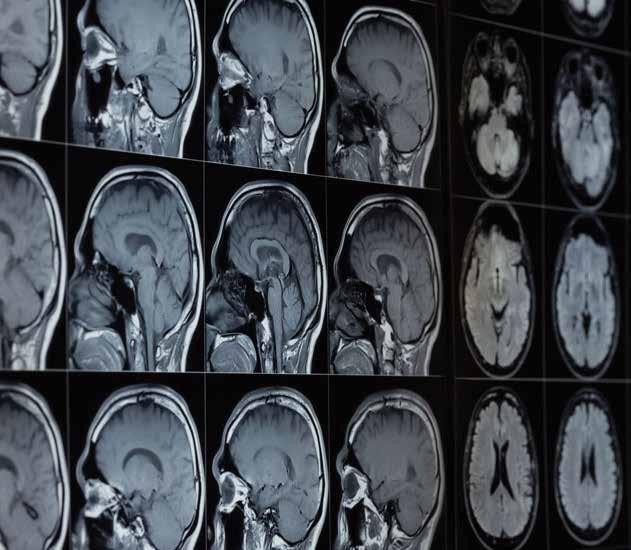
medications and therapy. The Center provides neuromodulation therapies, including electroconvulsive therapy (ECT), traditional transcranial magnetic stimulation (TMS) and ketamine infusions.
“Patients with treatment-resistant depression often try a variety of medications and therapies without any success, which can
exacerbate their depression symptoms and prolong their effects on daily living,” said Armando E. Colombo, president and CEO, The Menninger Clinic. “Menninger continues to seek new forms of treatment that can have a lasting impact on people, and the addition of Rapid Targeted TMS to our treatment options will be life changing for many.”






By Dr. Michael Sweeney, Cardiothoracic Surgeon 2025 Lifetime Achievement Winner American Heart Association
It’s February – American Heart
Month – a time when the nation spotlights heart disease, the No. 1 killer of Americans. For the basics of heart health, I love to introduce people to Life’s Essential 8, which are the key measures for improving and maintaining cardiovascular health, as defined by the American Heart Association. Better cardiovascular health helps lower the risk for heart disease, stroke and other major health problems. Let’s take a closer look at what you can do to improve your heart health:
1. Eat Better Aim for an overall healthy eating pattern that includes
whole foods, lots of fruits and vegetables, lean protein, nuts, seeds, and cooking in non-tropical oils such as olive and canola.
2. Be More Active Adults should get 2 ½ hours of moderate or 75 minutes of vigorous physical activity per week. Kids should have 60 minutes every day, including play and structured activities.
3. Quit Tobacco Use of inhaled nicotine delivery products, which includes traditional cigarettes, e-cigarettes and vaping, is the leading cause of preventable death in the U.S., including about a third of all deaths from heart disease. Roughly 40% of U.S. children ages 3-11 are exposed to secondhand smoke.
4. Get Healthy Sleep Most adults need 7-9 hours of sleep each night. Children require more: 10-16 hours for ages 5 and younger, including naps; 9-12 hours for ages 6-12; and 8-10 hours for ages 13-18. Adequate sleep promotes healing, improves brain function and

reduces the risk for chronic diseases.
5. Manage Weight Achieving and maintaining a healthy weight has many benefits. Body mass index, a numerical value of your weight in relation to your height, is a useful gauge. Optimal BMI is less than 25, but less than 18.5 is considered underweight. You can calculate it online or consult a health care professional.
6. Control Cholesterol High levels of non-HDL, or “bad,” cholesterol can lead to heart disease. Your
Mako SmartRobotics™ for joint replacement
health care professional can consider non-HDL cholesterol as the preferred number to monitor, rather than total cholesterol, because it can be measured without fasting beforehand and is reliably calculated among all people.
7. Manage Blood Sugar Most of the food we eat is turned into glucose (or blood sugar) that our bodies use as energy. Over time, high levels of blood sugar can damage your heart,
see Healthy Heart ...page 13









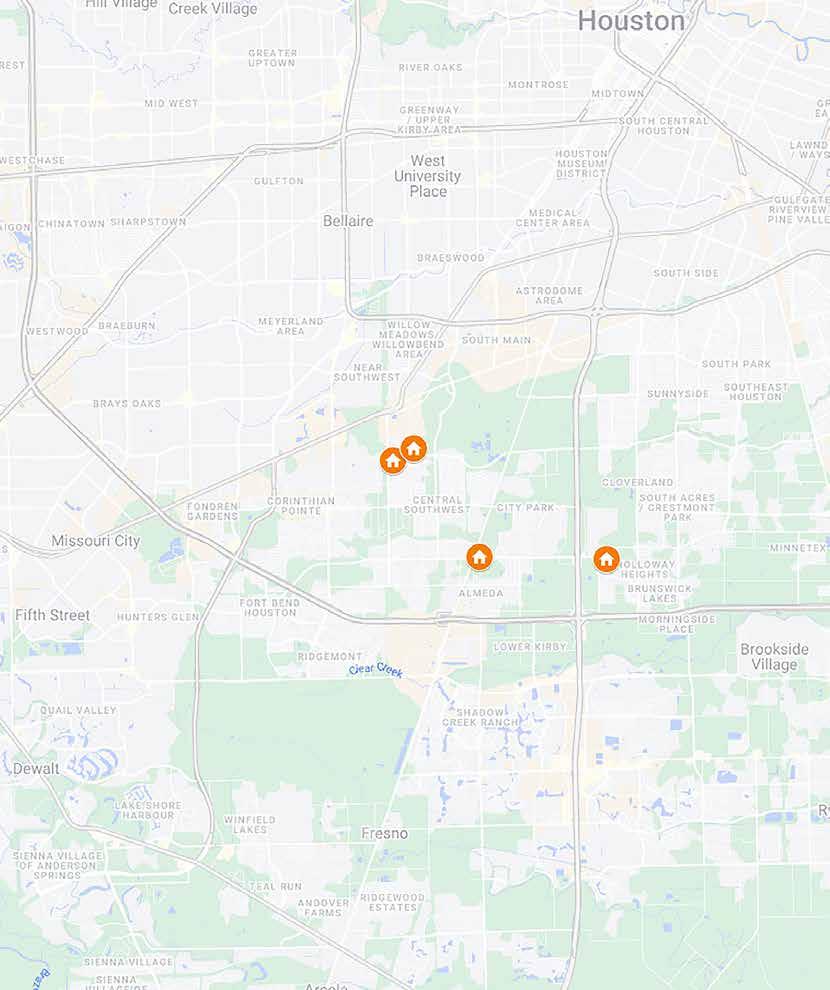





























By Lasha Markham
Nearlya quarter of Americans don’t follow a traditional nine-to-five workday, with many—including nurses, firefighters and flight attendants— working evenings, nights or rotating shifts. These irregular work schedules can disrupt shift workers’ internal body clocks, making it difficult for their bodies to keep track of the time of day. Now, researchers at the Texas A&M University College of Medicine are studying how this disruption may affect long-term health and well-being.
David Earnest, PhD, and Karienn de Souza, PhD, were inspired by previous epidemiological research suggesting that changes in how our body clocks regulate 24-hour or circadian rhythms could
have an effect on health and aging. According to Earnest, past clinical literature suggests that people with abnormal work or social schedules are more susceptible to an array of health disorders, including cardiovascular disease, diabetes and cancer.
Their most recent project, published in the Journal of Neuroinflammation, examines the potential link between shift work from ages 18–26—when people are most likely to engage in shift work—and health later in life, specifically related to memory and cognitive decline.
De Souza’s expertise lies in cognition and aging and Earnest’s is in how internal body clocks control circadian rhythms and sleep. When the team was discussing ways to expand on

previous research, the idea for this novel project arose naturally.
“We were interested in following up on our previous observations examining associations between age-related changes in cognition and circadian rhythms to determine whether or not circadian rhythm dysregulation by itself is a long-term risk factor for accelerated cognitive decline later in life,” Earnest said.
To achieve their goal, the team utilized an experimental model that allowed them to isolate the specific
effects of circadian rhythm and sleep dysregulation and avoid potential influence of other shift work-related comorbidities, like drinking, smoking and poor diet, on any resulting cognitive changes. During the study, the subjects used spatial tests of learning and memory. These tests measure the ability of the subject to navigate maze-based tasks and utilize spatial cues to reach the goal.
Spatial tests of learning and see Shift Work...page 13

In an effort to improve public health and reduce cancer risk in East Texas, leaders in Beaumont are working with The University of Texas MD Anderson Cancer Center to launch Be Well™ Beaumont through a newly announced $10 million gift from ExxonMobil. Community members, collaborators and representatives from MD Anderson kicked off the 10-year initiative today in Beaumont.
Be Well Beaumont aims to promote wellness and to lower cancer risk among community members by providing them with cancer prevention education and tools. This builds on Be Well™ Baytown, MD
Anderson’s inaugural program that has been supported by ExxonMobil since 2016. That initiative has reached more than 80% of residents, providing wellness strategies that have been implemented by 20 local organizations.
“The Baytown initiative demonstrated what can be achieved through effective community partnerships led by two world - class organizations,” said Darren Woods, ExxonMobil chairman and CEO.
“It is driving meaningful health and wellness benefits and we’re proud to team up again with MD Anderson to bring the same program to Beaumont in support of our neighbors and employees in that community.”
ready suites designed for patient wellbeing and specialty care.

Be Well Communities, MD
Anderson’s place-based strategy for comprehensive cancer prevention and control, unites individuals, schools, workplaces, government agencies, health care providers and policymakers to plan and carry out sustainable, community-led solutions that make positive, long-lasting changes in people’s lives.
“Cancer prevention is a cornerstone of our mission to end cancer,” said Peter WT Pisters, M.D., president of MD Anderson. “We are
grateful for ExxonMobil’s continued support to implement life-changing programs in communities like Beaumont and Baytown, where we can directly impact cancer risk reduction and provide tangible differences for countless families.”
Research indicates that up to half of cancer cases can be prevented through consistent healthy lifestyle choices, including exercising, avoiding tobacco, limiting alcohol,
Seven Memorial Hermann Health System employees are among the first class to receive their Licensed Vocational Nurse (LVN) certificates as part of a pilot program with Houston Community College (HCC) that is giving employees a chance to attend nursing school full-time, work full-time, keep their benefits, and still have one to two days off each week.
The year-long pilot program gave participants the ability to work as a cohort, build relationships, and receive mentoring from senior nurse leaders and educators during their journey. With financial help from Memorial Hermann’s Learn Well Program to pay for tuition and take part in clinical rotations, employees who have earned their certificate can now apply to work as a nurse in
a Memorial Hermann facility.
“I came to this country 10 years ago and the fact that I am becoming a LVN at my age is very exciting,” said 70-year-old James Isaboke, one of this year’s graduates who currently works as a patient care technician at Memorial Hermann-Texas Medical Center. “I have received so much support from my colleagues during this year-long journey and could not have done it without them. The program has allowed me to improve my clinical skills, and I am looking forward to interviewing and hopefully now serving patients as a LVN at Memorial Hermann.”
The current nursing shortage plaguing the country is expected to reach more than 50,000 by 2032. Bryan Sisk, senior vice president
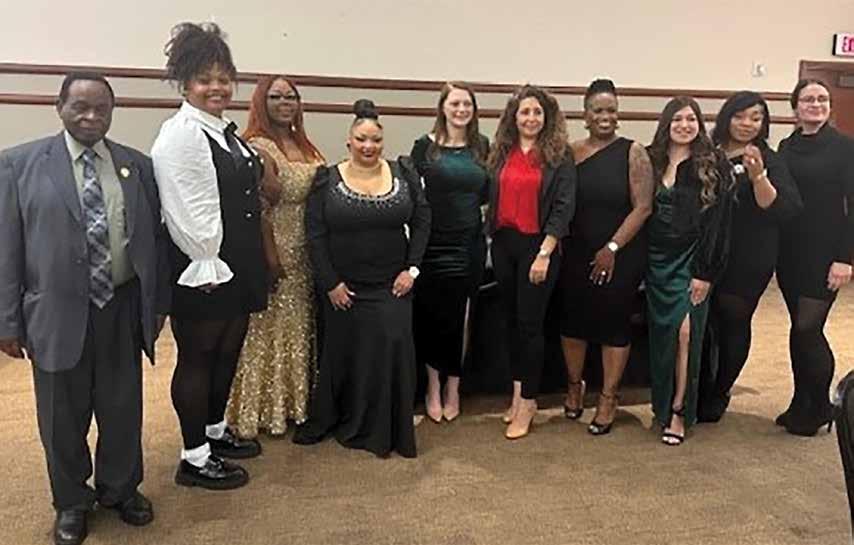
and chief nursing executive with Memorial Hermann, believes this program is an innovative way to build a sustainable talent pool of skilled caregivers dedicated to advancing patient care. Partnering with HCC and other institutions on nursing programs supports a pathway for employees to bolster their professional growth and advance their careers while providing them with opportunities that otherwise might not be possible.
“I am very proud of this first group of employees who have
worked to become LVNs,” Sisk said. “This program removed some of the barriers for people like James and has given them a better chance to succeed. We’re not only addressing the current and future workforce shortages but also helping these individuals realize their career goals.”

UTMB’s Professor Suresh K. Bhavnani named 2025 Presidential Leadership Scholar
Dr.Suresh K. Bhavnani, a professor of biomedical informatics in the Department of Biostatistics & Data Science in the School of Public and Population Health at the University of Texas Medical Branch, has been named one of 57 scholars who will form the Presidential Leadership Scholars’ 10th annual class. For the past decade, Presidential Leadership Scholars has brought together more than 500 diverse, established leaders to collaborate and make a difference in the world as they learn about leadership through the lens of the presidential experiences of George W. Bush, William J. Clinton, George H.W. Bush, and Lyndon B. Johnson.
The Presidential Leadership Scholars program is a partnership among the presidential centers of George W. Bush, William J. Clinton, George H.W. Bush, and Lyndon B. Johnson. The organization choose scholars based on their leadership growth potential and the strength of their personal leadership projects aimed at addressing a critical challenge or need in a community, profession, or organization.
Bhavnani, who obtained his PhD in Computational Design and Human-Computer Interaction from Carnegie Mellon University, develops and uses human-centered AI methods to analyze biomedical data, with the goal of translating the results into public health policies, and clinical decision-support systems.
“It’s an honor of a lifetime to be part of the 2025 Class of Presidential Leadership Scholars,” said Bhavnani. “I am eager to learn from civic leaders how to translate our AI research results into public health policies that can improve the lives of Americans.”
Over a period of 6 months scholars will work on a civic-minded project intended to solve a problem or pressing issue in their community, country, or the world. Bhavnani has proposed to redefine U.S. health equity policies that are based on a few
sociodemographic variables like race and income, to be more need-based using social determinants of health, guided by human-centered AI.
“Race and income are proxies for need, not the needs themselves,” Bhavnani said. “I believe health equity policies based on such sociodemographic variables can be made more precise and therefore more efficient in their use of limited federal and state resources. This opportunity will enable me to work closely with civic leaders in the PLS program, policy analysts from Rice University’s Baker Institute for Public Policy, and the Houston Health Department to learn how to make such changes to public health policies. Our NIH AIM-AHEAD grant in collaboration with Texas Southern University has been critical in helping us conduct the research to motivate this change.”
Over the course of the program, the chosen scholars will travel to each participating presidential center to learn from former presidents, key former administration officials, business and civic leaders, and leading academics. They will study and put into practice varying approaches to leadership and exchange ideas to help strengthen their impact.
“This is an outstanding national-level achievement by Dr. Bhavnani,” said Dr. Jochen Reiser, president of UTMB. “The program will help him develop the civic leadership skills to bridge the results generated from AI with public health policies, critical to medical research institutions around the world.”
Scholars have consistently reported remarkable growth in skills, responsibilities, and opportunities for impact since the program began in 2015. For example, 96% of Scholars said their confidence in how they lead social change has improved as a result of PLS, and 97% of Scholars reported they are inspired to accomplish more since beginning the program.
Dear Doctors and Staff,
Let us take the guesswork out of fracture referrals.
No more waiting for appointments!
We at the Orthopedic Care Center wish to offer your patients and staff easy scheduling of patients.
Our office has extended office hours on Fridays to accommodate patients with fractures.
On behalf of the Orthopedic Care Center
M.D.

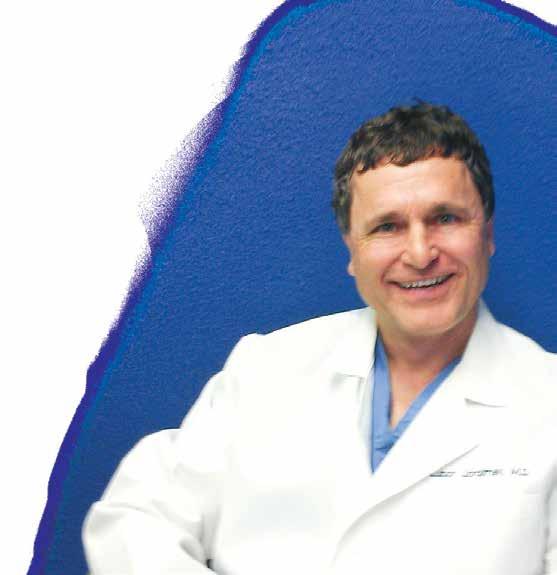
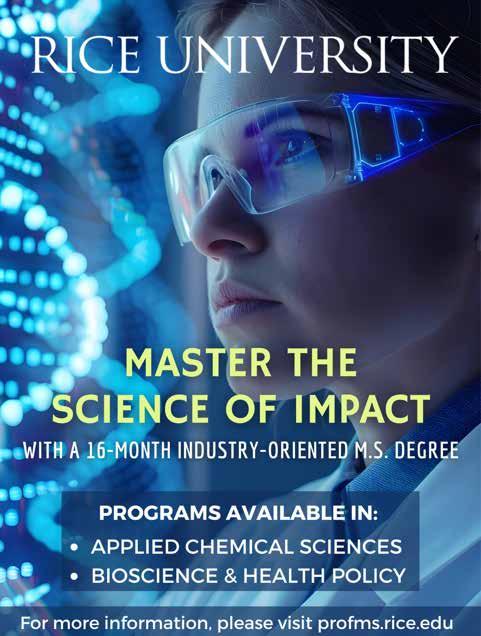




AsBy Grace S. Yung, CFP Midtown Financial Group, LLC
the new administration takes office and proposes significant policy changes, such as the imposition of tariffs, individuals must reassess their financial planning strategies to adapt to potential economic shifts. Tariffs can increase the cost of goods and trigger broader economic consequences like inflation, impacting purchasing decisions and long-term savings strategies. Below are key financial considerations to navigate these changes.
Purchasing Big-Ticket Items
Tariffs could increase the cost of imported goods, such as cars and electronics. If you’re planning to make a major purchase, consider:

2. Diversifying Tax Strategies:
Allocate savings across taxable, tax-deferred, and tax-free accounts to maintain flexibility.
3. Staying Informed: Work with a tax advisor and a CFP professional to adjust your strategies in response to new legislation.
Managing Daily Expenses
Inflation and higher tariffs could increase everyday costs. Consider:
1. Shopping Strategically: Use sales, bulk-buy essentials, and compare prices to manage rising expenses.

1. Timing Your Purchase: Buying now could help avoid higher prices later as manufacturers pass costs to consumers.

2. Evaluating Extended Warranties: If tariffs drive up the cost of replacement parts, purchasing an extended warranty now could protect against future repair expenses.
Preparing for Inflation
Tariffs can lead to inflation, reducing purchasing power. Here are some ideas to help you prepare:
1. Reassess Your Budget: Identify discretionary spending that can be reduced. Focus on essentials like groceries and utilities.
2. Strengthen Emergency Savings: Boost your savings to cover three to six months of living expenses, providing a cushion against rising costs.
3. Consider Inflation-Protected Investments: Inflation-Protected Securities.
Tax Planning Adjustments
Potential tax law changes under the new administration may affect deductions and credits. Key actions include:
1. Maximizing Tax-Advantaged Accounts: Contribute fully where possible to IRAs and 401(k)s to reduce taxable income.
2. Locking in Rates: opt for fixed-rate plans for utilities or insurance to avoid variable cost increases.
3. Refinancing Debt: Lower your interest rates on loans before potential rate hikes.
Estate Planning Considerations With the Tax Cuts and Jobs Act of 2017 scheduled to sunset at the end of 2025, estate tax exemption amounts may decrease significantly. Take steps to preserve your legacy:
1. Review and Update Documents: Align your will and trusts with current tax laws and your goals.
2. Utilize Gifting Strategies: Consider leveraging the current higher exemption amount through gifts to heirs or trusts.
3. Work with Professionals: A Certified Financial Planner practitioner and an attorney can help develop a strategy tailored to your needs.
Conclusion
The new administration’s policies may reshape the financial landscape. Proactive planning, such as timing major purchases, adjusting for inflation, and reviewing estate plans, can help you stay financially prepared. Collaborate with qualified professionals, such as board-certified estate planning attorneys and Certified Financial Planner practitioners to work toward your financial goals.
Continued from page 3
to 27.1% in the QL+ and 25.2% in the QL cohorts. At the six-month mark, IC maintained the highest quit rate, 32.4%, compared to 27.6% for the QL+ group and 20.5% for the QL group.
“Facilities equipped to provide dedicated and integrated care should prioritize doing so to offer patients the best opportunity for smoking cessation
Continued from page 6
and improved health outcomes,” Cinciripini said. “Given our results, it is conceivable that this approach could also be highly effective outside a screening environment, such as post-traumatic stress clinics and among patients with cancer, cardiovascular disease or diabetes.”
Limitations of this study include that the population was predominately white, and that the entire sample lacked CO (expired carbon monoxide) abstinence verification due to covid
restrictions after the study had begun, although overall results between sub-samples with and without verification were similar.
This research was supported by the National Cancer Institute (R01CA207078, P30CA016672), the MD Anderson Lung Cancer Moon Shot, the State of Texas Permanent Health Funds, and the Margaret and Ben Love Chair in Clinical Cancer Care in Honor of Dr. Charles A. LeMaistre. Varenicline was supplied by Pfizer
Pharmaceuticals, and quitline services were provided by RVO Health. A full list of acknowledgments, collaborating authors and their disclosures can be found at https://jamanetwork.com/ journals/jamainternalmedicine/articleabstract/2829155
kidneys, eyes and nerves. As part of testing, monitoring hemoglobin A1c can better reflect long-term control in people with diabetes or prediabetes. 8. Manage Blood Pressure
Continued from page 8
memory use a part of the brain called the hippocampus, which is responsible for converting short-term memory to long-term memory. This is significant because the hippocampus is typically affected in Alzheimer’s and other cognitive diseases.
In this study, the researchers found that animals exposed to shifted light-dark cycles during early adulthood showed signs of dramatic cognitive decline by middle age—roughly equivalent to 50 years in humans—well before cognitive deficits typically emerge in older subjects, around 70 or older. The team believes the shift work-related alterations in circadian rhythms earlier
Continued from page 9
eating a balanced diet, maintaining an appropriate weight, protecting your skin from the sun, completing cancer prevention vaccines, getting cancer screening exams and discussing your family history with your doctor.
New initiative informed by proven model of impact
MD Anderson’s Be Well Communities are built on 100 years of best practices, literature and experience in healthy community initiatives. The model centers on working with community-based organizations to build their capacity
Keeping your blood pressure within acceptable ranges can keep you healthier longer. Levels less than 120/80 mm Hg are optimal. High blood pressure is defined as 130-139
in life have a long-term impact on the function of the hippocampus, accelerating cognitive aging.
Earnest’s earlier research indicated that similar alterations of circadian rhythms affect the regulation of immune cells and their inflammatory responses. Current analyses led by Karen Newell-Rogers, PhD from Texas A&M College of Medicine show that early circadian rhythm dysregulation in response to shift work-like cycles promotes pro-inflammatory activation of immune cells, leading to a persistent inflammatory condition. Similar changes in the activation of immune cells and neuroinflammatory processes have been linked to the development of Alzheimer’s and age-related dementia.
Although all the study subjects exposed to shift work-like cycles developed severe cognitive decline, this
to deliver and evaluate evidence-based interventions.
Together with ExxonMobil, MD Anderson aims to create strong community linkages, to advance professional and policy changes, to establish an active health coalition, and to create a sustainability plan to transition the initiative to the community.
“It is a privilege to have the opportunity to work with leaders across Beaumont to implement collaborative change in the way people work, eat and play,” said Ruth Rechis, Ph.D., executive director ad interim of the cancer prevention and control platform at MD Anderson. “We are excited to get to know people
mm Hg systolic pressure (the top number in a reading) or 80-89 mm Hg diastolic pressure (bottom number).
As we observe American Heart Month this February, it’s a timely reminder that heart health is a lifelong commitment. By focusing on Life’s
does not occur during normal aging, where only about half of the population experiences cognitive deficits, while the rest maintain unimpaired learning and memory. This distinction suggests that some individuals have factors in the brain that promote resilience against cognitive decline. This research may lead to the discovery of why some people are susceptible to cognitive aging, and others are not.
“If we ever hope to have treatments for Alzheimer’s disease— even if they’re not treatments, but prevention or lifestyle changes— we have to understand why those individuals are resilient,” Earnest said.
With the knowledge gained through this research, the team hopes to identify therapeutic interventions or other strategies for reducing dementia risk in individuals with a history of
in the community and cultivate strong and meaningful relationships.”
Program areas of focus for Be
Well Beaumont may include:
• Healthy eating: increasing the amount of healthy food distributed and providing nutrition education
• Active living: increasing the percentage of students and adults engaged in physical activity and improving parks and outdoor spaces for safe physical activity
• Sun safety: providing sun-safety education and installing sunshades across the city
• Tobacco-free living: providing education on the harms of tobacco use and vaping
Essential 8, you can significantly reduce your risk of heart disease and improve your overall well-being. It’s never too early to start making small changes that add up to big improvements in your heart health.
shift work and irregular sleep schedules. The next steps involve exploring how other parts of the body may contribute to inflammation related to cognitive decline. Specifically, the team hopes to examine the gut microbiome and its connection to the potential impact of shift work on cognitive decline later in life.
“I’ve published a lot of studies in my research career over last 35 years,” Earnest said. “But this might be some of the most significant research findings I’ve published in my life.”
• Preventive care: increasing access to cancer screenings and HPV vaccinations
Through the support of ExxonMobil’s $10 million commitment, Be Well Beaumont will be implemented over the next 10 years; leadership will transition to the community in 2034.
Continued from page 1
subcontractors to verify in writing at least once every 12 months to the immediate upstream entity that (i) they have deployed technical safeguards required by the Security Rule to protect ePHI through a written analysis of the business associate’s relevant electronic information systems by a subject matter expert and (ii) certification by someone with authority to act on behalf of the business associate that the analysis has been performed and is accurate.
Technical Safeguards
Under the Proposed Rule, Regulated Entities would need to: use multi-factor authentication and
Continued from page 4
professor of medicine, Houston Methodist Academic Institute
The project aims to advance the diagnosis of metabolically dysfunction-associated steatotic liver disease (MASLD) through innovative imaging techniques: photoacoustic tomography. This cutting-edge technology enables label-free imaging of blood vasculature, hemodynamics, lipid concentration and sound speed within organs, allowing for molecular-level detection of MASLD.
This approach holds significant potential for improving noninvasive diagnostics at the earliest stages of the condition and could play a critical role in reducing the associated risks of cardiovascular disease and Type 2 diabetes in affected populations. Leveraging Radiomic and Genomic Markers for Precision Diagnosis of Cardiac Sarcoidosis
Primary investigators:
• Meng Li, the Noah Harding Associate Professor in Statistics, George R. Brown School of Engineering and Computing, Rice
• Dr. Mahwash Kassi, assistant professor of cardiology, Houston Methodist Academic Institute
This project pioneers the integration of radiomic, genetic and phenotypic data for diagnosing cardiac sarcoidosis. The multiparametric approach represents a significant shift from traditional diagnostic methods, introducing a noninvasive, digital health-powered solution with the
encrypt ePHI at rest and in transit, with limited exceptions; establish and deploy consistent technical controls for configuring relevant electronic information systems; deploy anti-malware protection, remove extraneous software from relevant electronic information systems, and disable network ports in accordance with the Regulated Entity’s risk analysis; perform vulnerability scanning at least every six months and penetration testing at least once every 12 months. Regulated Entities would also be required to perform network segmentation.
Business Associate Agreements (“BAAs”)
OCR proposed adding a required provision in BAAs for a business associate to report to the upstream entity activation of its contingency
potential to transform clinical practice. Multimodal AI Model for Predicting Optimal Cytoreduction in Advanced Ovarian Cancer
Primary investigators:
• Meng Li, the Noah Harding Associate Professor in Statistics, George R. Brown School of Engineering and Computing, Rice
• Dr. Behrouz Zand, gynecologic oncologist, Houston Methodist
• Dr. Pedro Ramirez, chair of the Department of Obstetrics and Gynecology, Houston Methodist
This project aims to develop an AI-driven model to predict optimal cytoreductive surgery in advanced-stage epithelial ovarian cancer. By integrating quantitative preoperative computerized tomography features with clinical data, the model seeks to enhance the prediction accuracy of optimal cytoreduction. This approach addresses limitations in conventional prediction methods, contributing to better preoperative planning and personalized treatment strategies.
A Retrospective Study of Emerging Interventions in Minority Populations: Cardiovascular and Renal Benefits of GLP-1RA and SGLT2 Inhibitor Therapies in Minority Populations
Primary investigators:
• Ashutosh Sabharwal, the Ernest Dell Butcher Professor of Engineering and professor of electrical and computer engineering, George R. Brown School of Engineering and Computing, Rice
• Dr. Abhishek Kansara, assistant
plan without unreasonable delay, but no later than 24 hours after activation. This proposed requirement would not alter the business associate’s breach reporting obligations under the Breach Notification Rule.
The Proposed Rule requires group health plans to include certain requirements in their plan documents for their group health plan sponsors, such as a requirement to comply with the administrative, physical and technical safeguards of the Security Rule and to ensure that any agent to whom they provide ePHI agrees to implement the administrative, physical and technical safeguards of the Security Rule.
professor of clinical medicine, Houston Methodist Academic Institute
This project addresses the critical need to reduce cardiovascular disease and renal complications in individuals with Type 2 diabetes, particularly in underserved populations. By conducting a population-based retrospective cohort study within the diverse Houston Methodist health system, this research seeks to emulate a randomized clinical trial to quantify the cardiovascular and renal outcomes observed in minority groups, providing critical evidence for equitable and precise use of glucagonlike peptide 1 receptor agonists (GLP-1RA) and sodium-glucose cotransporter 2 inhibitors (SGLT2i) therapies.
“The collaborative efforts from PATHS-UP accelerate the invention, validation and implementation of technologies, ensuring they reach those who need them most. The partnership between Rice University and Houston Methodist is crucial in advancing health care through innovative research,” said Sharon Pepper, executive director of ENRICH.
As Rice advances its position as a leading nonmedical institution in health research, the ENRICH office will play a vital role in reinforcing the university’s commitment to digital health and patient-centered innovations, Pepper said. By removing institutional barriers, Rice will continue to foster collaborations with health-related partner institutions at the Texas Medical Center.

Scan to Visit medicaltimesnews.com
Houston Medical Times is Published by Texas Healthcare Media Group, Inc. All content in this publication is copyrighted by Texas Healthcare Media Group, and should not be reproduced in part or at whole without written consent from the Editor. Houston Medical Times reserves the right to edit all submissions and assumes no responsibility for solicited or unsolicited manuscripts. All submissions sent to Houston Medical Times are considered property and are to distribute for publication and copyright purposes. Houston Medical Times is published every month
P.O. Box 57430 Webster, TX 77598-7430



